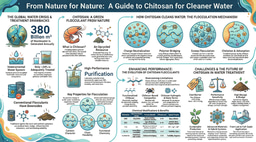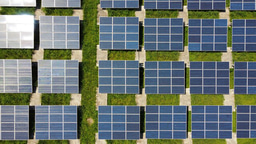Unravelling recent patterns in Antarctic ozone
Published in Earth & Environment

Today, in 2023, if you asked most people off the street, “Hey, what’s the deal with the ozone hole?” you might get a variety of responses. But the consensus would likely be, “I thought we solved that issue?”
I shared this same belief when I first began my research. Yet this belief sits strangely in juxtaposition with the ozone holes of recent years.
Most scientists know that outliers in data exist. Particularly in the field of atmospheric physics, where hundreds if not thousands of chemical and dynamical players are contending for cause and effect, and wild variations in data can occur over short timescales. That was a common explanation for the remarkably large and long-lived Antarctic ozone hole in 2020, “an outlier”. After all, ozone depletion since the late 1990’s had markedly slowed, and the scientific community had been rigorously working to confirm any emerging evidence of ozone hole recovery. However, around came 2021 and another large and long-lived ozone hole. Likely another outlier, right? By the time the 2022 ozone hole formed, a consistent pattern was emerging.

Fig. 1 | Daily area of the 2020-2022 Antarctic ozone holes, shown in comparison to the 1979-2019 median from Copernicus (Credit: https://atmosphere.copernicus.eu/copernicus-unusually-persistent-antarctic-ozone-holes-2020-2022)
I quickly realized that once data from the 2020-2022 ozone holes was tacked onto the observational record, many existing recovery trends would be disrupted. Our research began from there. As a first step, we decided to conclusively determine when and where worsening ozone depletion was occurring.
A misunderstood phenomenon
One of the predominant misconceptions about the Antarctic ozone hole is when and where it forms. The ozone hole occurs distinctly separate from the general thinning of the global ozone layer that occurs due to chlorofluorocarbons (CFCs), although CFCs are still a key player. The hole forms within what’s known as the polar vortex, as sunlight returning to the pole after the dark winter unleashes the most destructive chemical potential of CFCs on this isolated pocket of the atmosphere. Effectively, this means that the ozone hole appears only during the Southern Hemisphere spring season (September – November), and regularly grows to an area beyond 20 million km2, spanning in a large circle beyond the edges of the continent of Antarctica.

Fig. 2 | An example Antarctic ozone hole shown in Dobson Units from NASA Ozone Watch (Credit: https://ozonewatch.gsfc.nasa.gov/facts/hole_SH.html)
Shedding a light on the situation
By looking at detailed, daily ozone observations from the last 19 years, we found evidence of much less ozone in the center of the ozone hole compared to 19 years ago. This means that the hole has not only remained large in area, but it has also become deeper (i.e. has less ozone) throughout most of Antarctic spring. The especially long-lived ozone holes during 2020-2022 fit squarely into this picture, as the size/depth of the hole during October was particularly notable in all three years. On a positive note, however, we did find a delay in the ozone hole onset date and signs of increasing ozone during early-spring (September).

Fig. 3 | Change in daily, zonally averaged polar (75°S–82°S) ozone concentration (VMR) from MLS/Aura satellite observations, from Aug. 21st to Nov. 30th. Black vertical lines indicate separation between months. Red indicates where ozone has increased since 2004, while blue shows where ozone has continued to decline since 2004.
Knowing when and where worsening ozone depletion was occurring (October middle stratosphere, between 20-35 km in altitude) allowed us to focus on possible causes that might affect these spatiotemporal regions. From here, we found a link between declining ozone and changes in air descending into the polar vortex during October (a dynamical effect). Altogether, our findings revealed the recent, large ozone holes may not be caused just by CFCs. So, while the Montreal Protocol has been indisputably successful in reducing CFCs over time and preventing environmental catastrophe, the persistence of the Antarctic ozone hole appears to be closely tied to changes in atmospheric dynamics.
So, what do our findings mean?
First of all, for our readers in the Southern Hemisphere, a worsening Antarctic ozone hole luckily does not mean we all need to apply more sunscreen. As we know (see above), the ozone hole generally remains centered over Antarctica. However, the ozone layer remains critical for UV absorption in the atmosphere. A hole in the ozone layer can not only cause extreme UV levels on the surface of Antarctica, but it can also drastically impact where heat is stored in the atmosphere. Downstream effects include changes to the Southern Hemisphere’s wind patterns and surface climate, which can impact us locally. So, while we remain optimistic that the ozone hole will eventually become a remnant of the past, its fingerprint on our planet will persist for decades to come.
Thinking forward
Beyond our work, the 2023 ozone hole has already surpassed the size of the three years prior. Late in September, it was over 26 million km2, nearly twice the area of Antarctica. Even with the continued, successful reduction of CFCs in the atmosphere, the recovery of the Antarctic ozone hole is not projected until 2065, another 40 years into a quickly changing climate. Our results highlight the need to keep a close watch on the ever-changing Antarctic ozone hole.
For ongoing daily ozone hole updates, check out these sources:
Follow the Topic
-
Nature Communications

An open access, multidisciplinary journal dedicated to publishing high-quality research in all areas of the biological, health, physical, chemical and Earth sciences.
Related Collections
With Collections, you can get published faster and increase your visibility.
Women's Health
Publishing Model: Hybrid
Deadline: Ongoing
Advances in neurodegenerative diseases
Publishing Model: Hybrid
Deadline: Dec 24, 2025



Please sign in or register for FREE
If you are a registered user on Research Communities by Springer Nature, please sign in